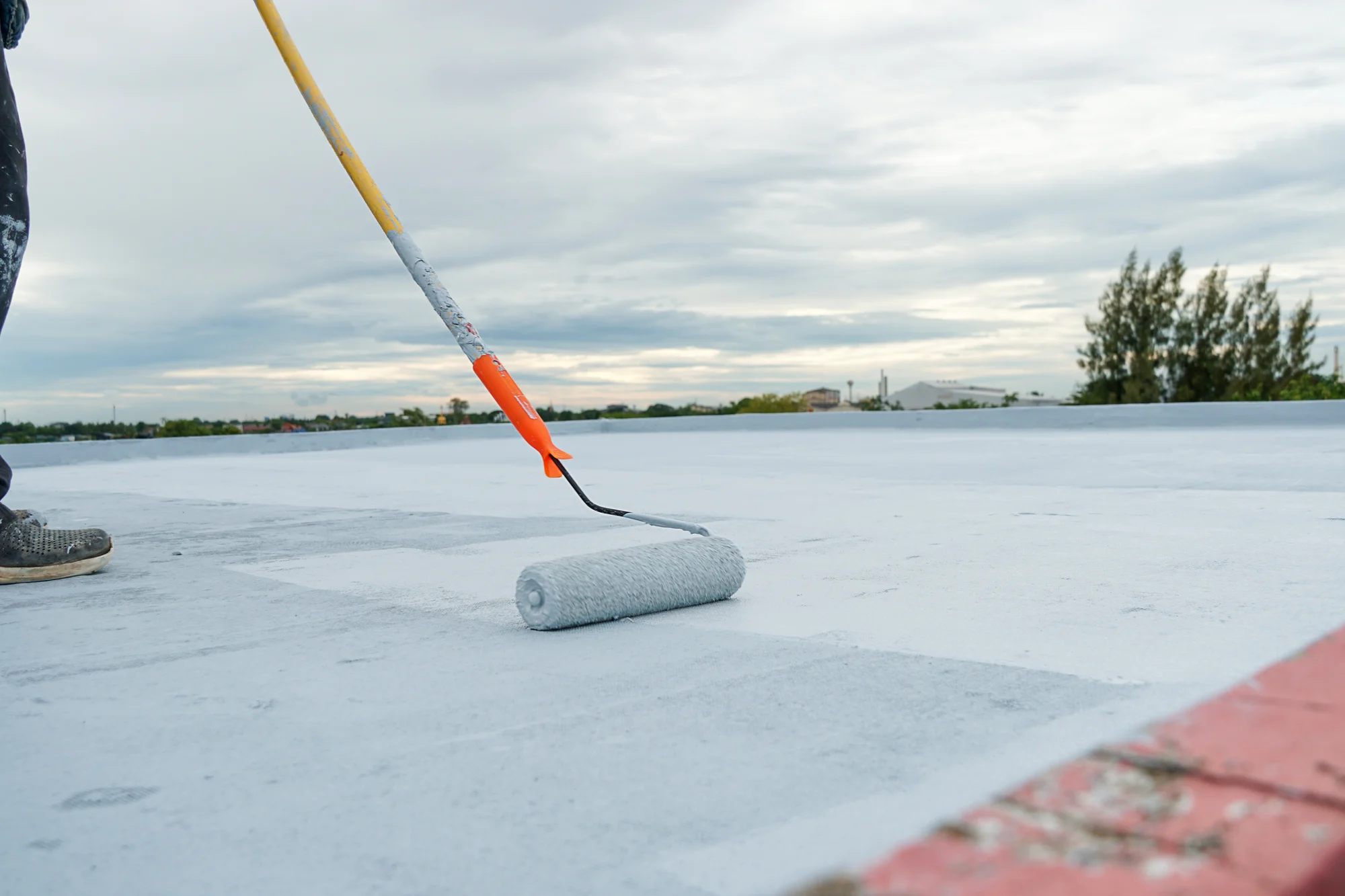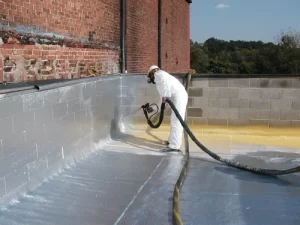A well-maintained roof is crucial for the longevity and protection of any building. One effective way to enhance the durability of your roof is by applying a roof coating. Roof coatings not only extend the lifespan of your roof but also provide numerous benefits, including energy efficiency, leak prevention, and cost savings. In this guide, we’ll explore the benefits, different types of roof coatings, and the application process.

Benefits of Roof Coatings
Extended Roof Lifespan – Roof coatings act as a protective barrier, shielding the roof from harsh weather conditions, UV rays, and general wear and tear.
Energy Efficiency – Reflective coatings can reduce heat absorption, lowering cooling costs and making buildings more energy-efficient.
Leak Prevention – A seamless roof coating can seal cracks and prevent water infiltration, reducing the risk of leaks and structural damage.
Cost Savings – Instead of a full roof replacement, applying a coating can be a more affordable option that extends the life of your existing roof.
Sustainability – Many roof coatings are environmentally friendly, reducing landfill waste by minimizing the need for roof replacements.
Types of Roof Coatings
There are several types of roof coatings, each designed for specific roofing materials and performance needs:
- Acrylic Roof Coatings
Water-based and highly reflective
Ideal for sloped roofs
Provides UV protection and durability
- Silicone Roof Coatings
Excellent water resistance, making them ideal for areas with heavy rainfall
High flexibility and durability
Good UV protection but attracts dirt over time
- Polyurethane Roof Coatings
Great for areas with high foot traffic
Resistant to impact and abrasions
Available in aromatic and aliphatic types, with the latter being more UV resistant
- Asphalt-Based Roof Coatings
Best for built-up or modified bitumen roofs
Offers water resistance and flexibility
Often reinforced with fibers for extra strength
Application Process for Roof Coatings
Applying a roof coating requires proper preparation and technique to ensure maximum effectiveness. Here are the general steps:
 Inspection & Cleaning – Assess the roof for damage, remove debris, and clean the surface thoroughly.
Inspection & Cleaning – Assess the roof for damage, remove debris, and clean the surface thoroughly.
Repairs – Seal any cracks, repair leaks, and ensure the roof is structurally sound.
Primer Application (if needed) – Some coatings require a primer to enhance adhesion.
Coating Application – Apply the roof coating using a brush, roller, or spray system, ensuring even coverage.
Curing & Inspection – Allow the coating to cure according to the manufacturer’s instructions and conduct a final inspection to ensure proper application.
Roof coatings are a cost-effective and sustainable solution to prolong the life of your roof while enhancing energy efficiency and protection. Whether you have a commercial or residential property, choosing the right coating can save money, reduce maintenance, and contribute to environmental conservation. If you’re considering a roof coating for your building, consult with a professional to determine the best type for your specific needs.
